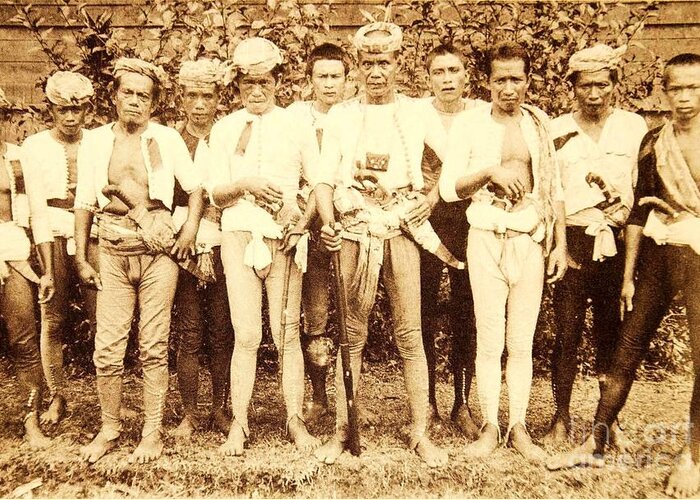Tausug Philippines for Beginners
Table of ContentsA Biased View of Tausug PhilippinesTausug Philippines for BeginnersThe Single Strategy To Use For Tausug PhilippinesThe Facts About Tausug Philippines RevealedAbout Tausug Philippines7 Easy Facts About Tausug Philippines Shown
Anne's understandings of the Pangalay demonstrate how, in a location where several cultures exist side-by-side, respect for tribal possession of a dance is not incompatible with a recognition for as well as even a sense of satisfaction in the collective corpus of dances as one practice, on a national level. Dancing is a task so common in Philippine society that, paradoxically, it is often taken for given.
There is no denying that Reyes-Aquino deserved her National Musician Award in Dance for the collection of summaries of all the dancings that show up in her six-volume job (Aquino 1953), yet I maintain that additional research study is needed to enhance this collection by upgrading, trimming, expanding, and dealing with, where essential, especially when it pertains to the classification as well as categories of dancings.
There is much info therein, definitely, but efficient reorganization as well as circulation of this info calls for the job of much more scholars. I note, nevertheless, that this procedure of revision is not without its political problems among dancing scholars as well as experts. Tausug Philippines. For instance, while investigating the Pangalay in the capital and 2 districts of Tawi Tawi, an island district within the Sulu island chain, Santamaria found that the citizens of this province separated the Pangalay from the Igal.
An Unbiased View of Tausug Philippines
Not remarkably, reactions from Amilbangsa's team to this case were hostile, charging Santamaria of negating Amilbangsa's initial study rather than seeing it as the exploration of brand-new knowledge. As the recognized professional in Pangalay, it was presumed that Amilbangsa could not be incorrect, in the exact same fashion that Aquino's research is believed to be indisputable.
Bajau kids learning the Igal in Sempornah, Sabah. Photo by Hanafi Hussin. Amilbangsa's advocacy for the Pangalay merits because she seeks to keep the tradition active to make sure that future generations will certainly maintain doing this old-time type that was exercised before the individuals who danced it were transformed to Islam.
Clearly, it would certainly be advantageous if she might upgrade her research or enable others to proceed the research for her. My account of problems with the classification as well as categorization of dancings in the Philippines and also their paperwork seeks to demonstrate how the growth of a national heritage is not without contestation, as multiple cultural teams battle to retain their identification and also independence on a tribal level within the linked sector that is nationhood.
Tausug Philippines - The Facts
On the lower footer of the website, a copyright is indicated from 1999-2013, although this may show the length of time that the Alun Alun Dance Circle has been in operations, as specified on the website's account page: http://pangalaydance. com/the-alun-alun- dance-circle. It would certainly be safe to state that the post "The Pangalay Dancing Style" might have been published to the site as early as January 2007, which is the earliest date of the archives of short articles on the site, as well as written before after that.
gov.ph, it is unclear where an upgrade of this report can be discovered. Overviews of the background of Philippine dancing are located in Basilio Esteban Villaruz's Sayaw: An Essay on Philippine Dance, which site here was published as a short essay by the Cultural Facility of the Philippines (CCP) in 1989, then included in the Tuklas Sining series (1991 ).
In some areas, the movement of such individuals has drastically altered the ethnic make-up. Such is the situation of southern Sulu, the islands comprising the province of Tawi-Tawi. This paper is Our site a conversation of recent population motions in the Sulu Islands, and also how these may be connected to the society background of the Sama individuals, the earliest residents of Sulu (*).
Excitement About Tausug Philippines

Style and also Area Preparation. There are 3 sorts of Mranaw residences: the lawig (cottage), mala-a-wali (huge residence), and also the torogan or genealogical home of the datu. Some Mranaw residences have blog posts which relax on the spherical rocks; these "drifting structures" stop the structures from collapsing throughout earthquakes (Peralta, 1975: 28-31).
It stands thirty to 220 centimeters above the ground, hing on nine to twelve bamboo or wooden poles. A fenced patio works as the front of your home; the cooking area, which is fifty centimeters less than the structures, is at the back. Tausug Philippines. The text homes the resting location, which doubles as a living as well as functioning location in the early morning.
The Ultimate Guide To Tausug Philippines
The widowed line flooring of your house is of split bamboo connected with rattan. Carved upper bodies, headboards, or insect screens separate the interior right into the sleeping and also non- sleeping locations. Covered with a riyara woven floor covering, rice-stalk packages offer as bed cushions, the head and also foot of which are set out with cushions.
The roofing system of the mala-a-walai is made of thick cogon turf protected on bamboo this contact form structures by rattan. Scratched bamboo posts server as the stairs, which are positioned at the front and also rear of the residence (Alarcon, 1991: 65-66). The finest instance of Mranaw architecture is the torogan, which showcases the very best of Mranaw okir (essentially, "sculpting").

Little Known Questions About Tausug Philippines.
